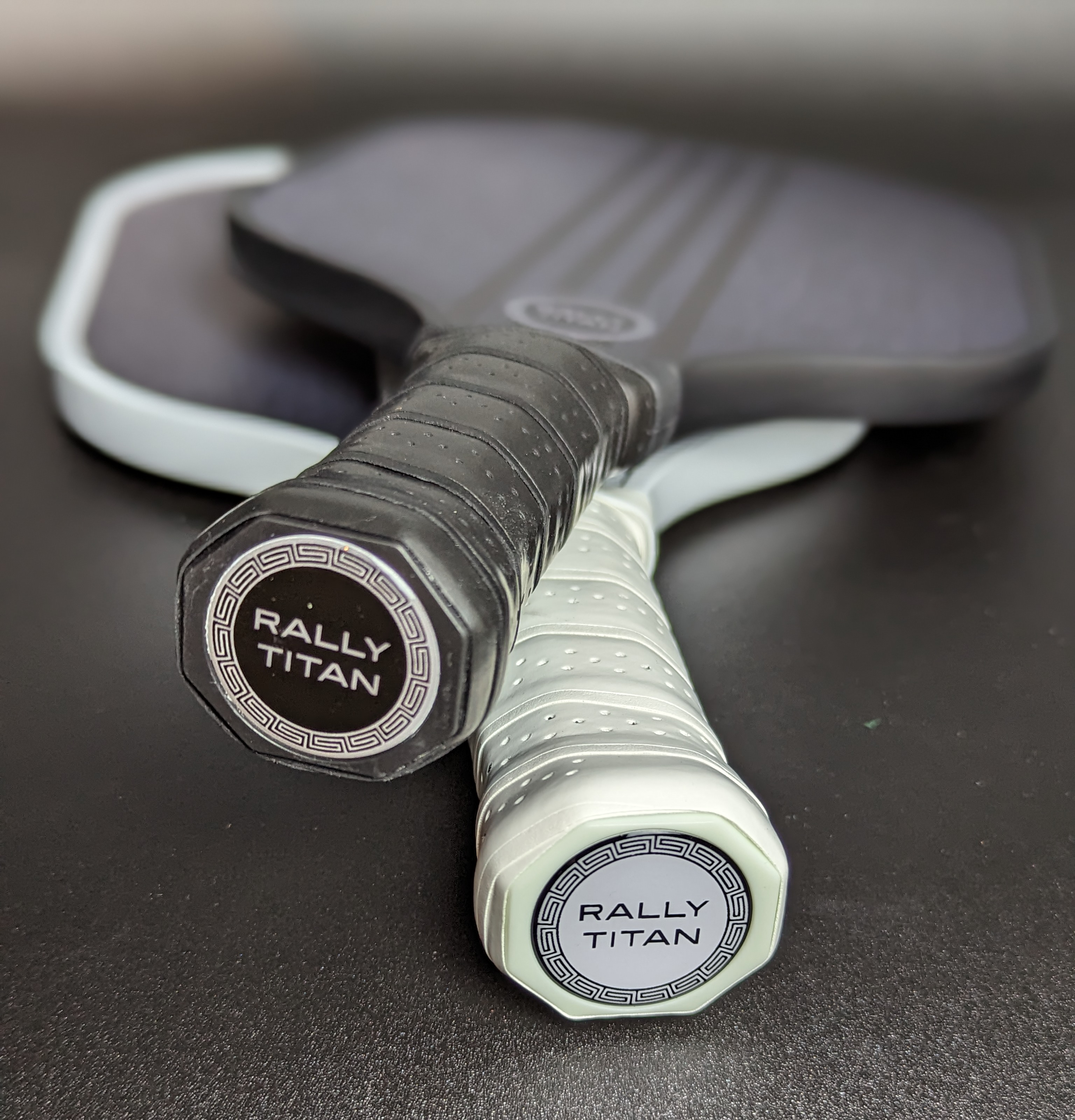Importance of pickleball grips
Pickleball grips play a crucial role in enhancing your game and minimizing the risk of injury. A proper grip can provide better control, stability, and power during your shots. It also helps to absorb sweat, ensuring a secure hold on the paddle, especially during intense matches. By choosing a suitable grip, you can improve your overall performance and prevent discomfort or strain in your hands and wrists.
Types of pickleball grips
The three main types of pickleball grips are the Continental grip, the Eastern grip, and the Western grip. Here's a quick overview of each type:
- Continental grip: It's the most versatile grip and is commonly used for volleying and serving. The paddle handle rests between the thumb and the index finger, providing stability and control.
- Eastern grip: This grip is suitable for groundstrokes. The handle is held slightly further down the paddle, and the index knuckle points towards the hitting surface, offering a good mix of power and control.
- Western grip: It's ideal for creating topspin on your shots. The handle is held even further down the paddle, and the index knuckle points even more towards the hitting surface, enabling strong topspin shots.
Each grip has its own advantages, and the choice of grip can significantly impact your game and help reduce the risk of injury.
Benefits of using the right pickleball grip
Using the right pickleball grip can help improve your game and reduce the risk of injury. A proper grip can provide better control and feel of the paddle, allowing you to make more accurate shots and maneuvers on the court. It can also help prevent hand and wrist strain, giving you a more comfortable and enjoyable playing experience. By choosing a grip that suits your playing style and hand size, you can optimize your performance and enhance your overall pickleball experience.
How to choose the best pickleball grip for your game
When choosing a pickleball grip, it's important to consider the following factors:
- Material: Look for a grip made from a comfortable and durable material to ensure a secure hold and reduce the risk of injury.
- Size: Consider the size of your hand and find a grip that feels comfortable and provides a secure fit.
- Texture: Opt for a grip with a texture that suits your playing style, providing a balance of control and comfort.
- Moisture Absorption: If you sweat a lot during games, choose a grip that offers good moisture absorption to prevent slippage.
These factors are essential for finding the best pickleball grip to enhance your game and reduce the risk of injury.
Impact of pickleball grips on game performance
The right pickleball grip can greatly enhance your game and help prevent injuries. A good grip on your paddle can improve your control and stability, leading to better shots and more accurate placement. It can also reduce the strain on your wrist and forearm, minimizing the risk of injury during intense gameplay. Different grip materials, such as cushioned, perforated, or tacky, can provide varying levels of comfort and traction, influencing your overall performance on the court. Experimenting with various grip styles can give you a better understanding of what works best for you, ultimately impacting your game's success.
Preventing injuries with the right pickleball grip
Using the right pickleball grip can help prevent injuries during your game. Different grips offer various levels of cushioning and support to reduce strain on your hand and arm. The right grip can also provide a more secure hold on the paddle, reducing the risk of slipping and causing an injury. By choosing a grip that suits your playing style and comfort, you can improve your game while minimizing the risk of injury.
Proper technique for using different pickleball grips
The proper technique for using different pickleball grips is essential to improve your game and prevent injury. Here are some tips to consider:
- Continental Grip: Use this grip for most shots, including the serve, volley, and overhead. Hold the paddle like you are shaking hands with it, with the base knuckle of your index finger on the flat surface of the paddle.
- Eastern Backhand Grip: Employ this grip for backhand shots, allowing for more control and power. Hold the paddle perpendicular to the ground, with the base knuckle of your index finger near the edge of the paddle.
- Western Grip: Use this grip for topspin shots, positioning your thumb on the right side of the paddle handle for right-handed players, and on the left side for left-handed players.
Remember, using the correct grip can enhance your play and minimize the risk of injury in pickleball.
Tips for maintaining pickleball grips
Regularly check your pickleball grips for signs of wear and tear, such as fraying or loss of tackiness. Clean your grips with mild soap and water to remove dirt and sweat buildup. Replace your grips if they become too smooth or slippery, as this can lead to reduced control and increased risk of injury. Rotate your grips frequently to ensure even wear and extend the lifespan of your paddle. Avoid using harsh chemicals or solvents when cleaning your grips, as these can damage the materials and affect their performance.
Common misconceptions about pickleball grips
Many players believe that a firm grip is always better, but that's not always the case. Sometimes a looser grip can actually improve your game and reduce the risk of injury. Another common misconception is that sticking with the same grip is the best approach. However, experimenting with different grip sizes and materials could actually help you find the one that suits you best. So, don't be afraid to try out different pickleball grips to see what works best for you!
Conclusion: Elevating your game with the right pickleball grip
To elevate your game with the right pickleball grip, consider the following:
- Comfort and Control: A good grip provides comfort and control, allowing you to play with ease and improve your performance.
- Injury Prevention: Using the right grip can reduce the risk of injuries such as wrist strain and blisters, enhancing your overall playing experience.
- Experimentation: Try out different grips to find the one that suits you best. It's essential to find the balance between comfort and control for your individual playing style.
- Seek Expert Advice: Consult with experienced players or sports professionals to get recommendations on the most suitable grip for your specific needs.



